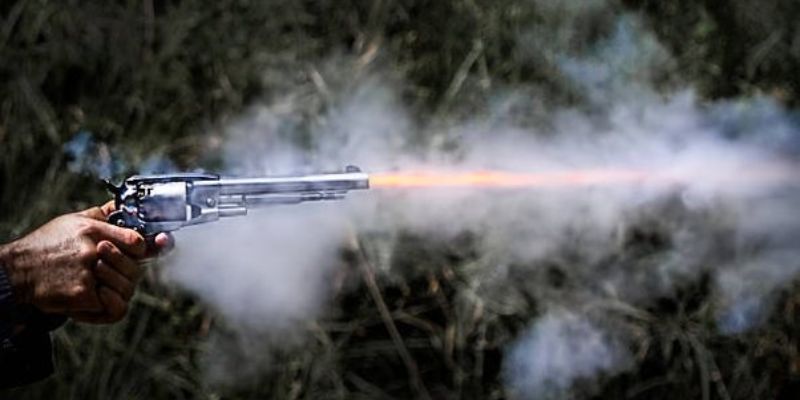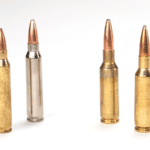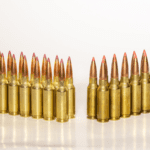Have you ever considered the consequences of shooting into a raging fire? A fascinating inquiry flashes interest and raises worries about likely risks. We will examine the repercussions of shooting a fire with a bullet in this article, shedding light on “What Happens if You Throw a Bullet in a Fire?”. So, let’s get started and find out the truth about this ferocious inquiry.
What Happens if You Throw a Bullet in a Fire?
Fires and bullets-two elements that, when taken together, bring to mind explosions and potential dangers. Although throwing a bullet into a fire may seem like a reckless act, what exactly would happen in the event of such an incident? Let’s take a closer look at the possibilities and the possible outcomes.
The Science that Work
To fully comprehend what happens when a bullet meets fire, we must take into account the underlying scientific principles. Due to the materials they are made of, bullets undergo a series of transformations when exposed to high heat. Let’s take it one step at a time.
Conduction of Heat: The heat from the flames is transferred to the surface of a bullet when it is thrown into a fire. Metal quickly absorbs and disperses thermal energy because it is an excellent heat conductor.
Expansion: The metal starts to expand as the bullet takes in heat. The increased kinetic energy of the bullet’s atoms causes this expansion. The casing of the bullet, which is typically made of brass or steel, will begin to deform and elongate.
Combustion: The bullet may contain gunpowder or other flammable substances, depending on the type of ammunition. These combustible materials explode inside the bullet when they are exposed to the fire’s high temperatures.
Fragmentation: The bullet may split into multiple pieces as the gunpowder explodes and the casing deforms. The power produced by the blast and the distortion of the packaging can move these pieces this way and that, representing an expected risk to anybody close by.
Possible Results
Now that we comprehend the science behind tossing a slug into a fire, we should investigate the different results that could emerge from such an activity. It’s significant to take note of that these results are speculative situations in light of logical information, and we emphatically deter participating in any hazardous exercises including guns or discharge.
Explosion and Fragmentation
When a gunpowder-filled bullet comes into contact with a fire’s intense heat, it is likely to explode. The bullet casing may break up and fly in different directions as a result of the explosion. The fragments could be hurled with a lot of force, putting anyone in the area in serious danger. This result underscores the significance of taking care of ammo capably and staying away from openness to outrageous intensity sources.
Melting
If the bullet casing is made of a material that has a low melting point, like lead, the fire’s intense heat could melt it. When a metal’s temperature reaches or exceeds its melting point, it melts and changes from a solid to a liquid state. However, due to its higher melting point than the casing material, the lead core inside the bullet may not completely liquefy.
Distortion
Regardless of whether a slug detonate or liquefy in the fire, going through huge deformation is reasonable. The bullet’s shape and structural integrity are altered as a result of the extreme heat’s expansion of the metal. The bullet’s accuracy and trajectory when fired could be impacted by the deformation, which could render the bullet useless or alter its ballistic properties.
Impact on the Environment
When a bullet enters a fire, it may have an impact on the environment. The composition of the bullet may cause harmful substances to be released into the air and surroundings. For instance, toxic projectiles can produce poisonous vapor when presented to high temperatures. If inhaled, these fumes can be harmful, and they can also contaminate nearby soil and water sources, putting human health and the ecosystem at risk.
Fire Dangers
Another way to put a fire in danger is to shoot a bullet into it. The combustible materials contained within the bullet, like gunpowder, have the potential to ignite and aid in the spread of the fire. This may result in an increase in the flames, putting structures, vegetation, and people in the area in danger.
Frequently Asked Questions About Shooting Bullets Into Fire
Can an explosion be caused by shooting a bullet into a fire?
Indeed, contingent upon the projectile’s structure, especially in the event that it contains black powder, it can prompt a blast when presented to the serious intensity of a fire.
Is it safe to shoot a fire with a gun?
No, tossing a shot into a fire isn’t protected. Explosions, fragmentation, and the release of hazardous fumes are just a few of the potentially hazardous outcomes.
How would it be a good idea for me to respond in the event that I track down a projectile close to a fire?
It is essential to exercise caution and steer clear of shooting into the flames. All things being equal, contact neighborhood specialists or an expert to securely deal with and discard the slug.
Are there any lawful ramifications for tossing a shot into a discharge?
Regulations with respect to the taking care of and removal of ammo fluctuate by ward. To avoid legal complications, it is essential to adhere to local regulations and seek guidance from appropriate authorities.
Might a projectile in a fire at any point hurt somebody close by?
Yes, if a bullet explodes or breaks up in a fire, the pieces can be very dangerous to anyone who is close by. It is critical to keep a protected separation and focus on private security.
What precautions should I take regarding fires and ammunition?
Continuously handle ammo capably and store it in a protected and fitting way. Ammunition should be kept away from heat sources and open flames to prevent accidental fire exposure.
Summary
In conclusion, shooting into a fire can result in dangerous and unpredictable outcomes. The serious intensity can prompt blasts, discontinuity, softening, misshapening, and the arrival of dangerous exhaust. Safety must come first, ammunition handling must be handled responsibly, and nothing should be done that could put oneself or others in danger.
On the off chance that you approach a fire, look for direction from nearby specialists or experts to guarantee its legitimate dealing with and removal.







